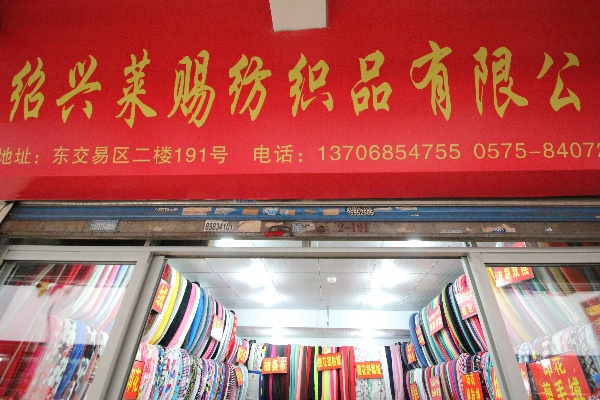Understanding the Standards for Medical Apparel Industry
This article provides a comprehensive understanding of the standards for medical apparel industry. It discusses the importance of adherence to these standards in ensuring the quality and safety of medical products, as well as the impact on patient care. The article highlights the various aspects of these standards, including design, materials, manufacturing processes, and testing procedures. It also discusses the challenges faced by manufacturers in meeting these standards and how they can be overcome through continuous improvement and innovation. Finally, the article provides insights into the future trends and opportunities in the medical apparel industry, highlighting the need for companies to stay ahead of the curve and adapt to changing market demands.
In today's healthcare landscape, the demand for high-quality medical products has grown significantly. This is where the importance of understanding the standards for medical apparel industry comes into play. Medical textiles are designed to meet specific requirements that ensure their safety, efficacy, and comfort for patients. In this article, we will discuss the key elements of these standards, including the classification of medical textiles, the testing procedures, and the compliance with international regulations.
Classification of Medical Textiles

Medical textiles can be broadly classified into three categories: surgical fabrics, non-surgical fabrics, and protective clothing. Each category has its unique set of requirements.
-
Surgical Fabrics
- These fabrics are used in surgeries where sterility is paramount. They must be made from materials resistant to bacterial growth and must pass stringent sterilization processes.
- Example: Nylon surgical gowns are a common example of surgical fabrics. They are tested for resistance to bacteria and must pass the Sterility Testing Protocol (STP) before they can be sold as surgical gowns.
-
Non-Surgical Fabrics
- These fabrics are used in healthcare settings where hygiene is less critical than in surgery. However, they still need to meet certain standards for wearability and functionality.
- Example: Non-sterile hospital gowns are required to be comfortable and washable. They must pass a laundry test that checks for colorfastness and shrinkage.
-
Protective Clothing
- These are garments used by healthcare workers to protect themselves from contamination. They must be made from materials that do not release harmful chemicals when worn or washed.
- Example: Disposable gloves are a common example of protective clothing. They are tested for chemical resistance and must pass a toxicological assessment to ensure they do not release harmful substances into the environment.
Testing Procedures
To comply with the standards outlined above, medical textiles undergo rigorous testing procedures. The following are some of the most common tests conducted on medical textiles:
-
Sterilization Testing
- This test measures the ability of the fabric to resist bacterial growth. It involves exposing the fabric to a controlled environment that simulates a sterile condition.
- Example: A fabric sample may be placed in an autoclave chamber for 60 minutes at a temperature of 121°C, which kills 99.9% of bacteria. If the fabric passes this test, it is considered sterile.
-
Laundry Testing
- This test checks the durability of the fabric in washing and drying conditions. It involves subjecting the fabric to various washing cycles and temperatures to see how well it retains its quality.
- Example: A fabric sample may be subjected to a series of washing cycles, including hot water, detergent, and dryer heat, to determine if it retains its color, texture, and shape after each cycle.
-
Chemical Resistance Testing
- This test measures the amount of harmful chemicals released by the fabric when worn or washed. It involves exposing the fabric to a range of chemicals and measuring the levels of contamination.
- Example: A fabric sample may be exposed to a range of chemicals, including acids, alkalis, and solvents, to see how much of each chemical is released over a period of time.
Compliance with International Regulations
Medical textiles are subject to stringent international regulations such as the International Organization for Standardization (ISO) standards and the European Union's Medical Device Regulation (MDR). These regulations require manufacturers to follow specific guidelines for manufacturing, testing, and labeling their products. For example, the MDR requires manufacturers to provide accurate information about the composition and properties of their products, including any potential risks or side effects.
In conclusion, understanding the standards for medical apparel industry is crucial for ensuring the safety and effectiveness of healthcare products. By following the classification, testing procedures, and compliance with international regulations, manufacturers can produce high-quality medical textiles that meet the needs of patients and healthcare professionals alike.
随着医疗技术的不断进步,医用产业用纺织品的需求日益增长,医用产业用纺织品在医疗设备、手术材料、伤口敷料等方面发挥着重要作用,其质量直接关系到患者的治疗效果和医疗安全,本文将围绕医用产业用纺织品的要求展开讨论,并通过英文案例分析来说明其重要性。

医用产业用纺织品要求
材料选择
医用产业用纺织品应选用高品质、无毒、环保的材料,这些材料应符合国家相关标准和行业标准,如无荧光剂、无重金属等,应具备优良的吸湿性、透气性、耐磨性等特性,以满足医用纺织品在各种环境下的使用要求。
尺寸与形状
医用产业用纺织品应符合人体工程学设计,尺寸精确,形状多样,这些纺织品应能够适应不同的手术操作和伤口处理需求,如手术衣、手术垫、敷料等,应考虑患者的舒适度和接受度,避免产生不适感。
抗菌与抗病毒性能
医用产业用纺织品应具备出色的抗菌和抗病毒性能,以防止细菌和病毒传播,这可以通过添加抗菌剂或抗病毒纤维来实现,应进行严格的抗菌测试和抗病毒测试,确保产品的有效性。
耐久性与使用寿命
医用产业用纺织品应具有较长的使用寿命,能够满足长期使用的需求,这需要选择耐久性好的材料,并进行适当的维护和保养,应考虑产品的可回收性,减少环境污染。
英文案例分析
以某医用产业用纺织品公司为例,其产品广泛应用于医疗设备、手术材料等领域,该公司采用高品质的材料,注重人体工程学设计,具备出色的抗菌和抗病毒性能,其产品经过严格的测试和认证,符合国家相关标准和行业标准,该公司的产品受到了广大用户的青睐和好评。
在案例中,该公司采用了特殊的纤维材料,具有优良的吸湿性、透气性和耐磨性,这些材料能够适应不同的手术操作和伤口处理需求,同时具备良好的抗菌和抗病毒性能,该公司还注重产品的尺寸精确性和形状多样性,能够满足不同患者的需求,在产品的使用过程中,该公司进行了严格的维护和保养,确保产品的有效性。
医用产业用纺织品是医疗领域的重要组成部分,其质量直接关系到患者的治疗效果和医疗安全,医用产业用纺织品的要求非常严格,在医用产业用纺织品的选择和使用过程中,应注重材料选择、尺寸与形状、抗菌与抗病毒性能、耐久性与使用寿命等方面,还应进行严格的测试和认证,确保产品的有效性,通过以上分析可以看出,医用产业用纺织品的重要性不言而喻。
Articles related to the knowledge points of this article:
New Area Advanced Needlework Textiles Manufacturer Wholesale Prices
The Story of the佛山市禅城区颖兴纺织品批发部
Protecting Your Skin with Textile Materials Against Mosquito Bites



